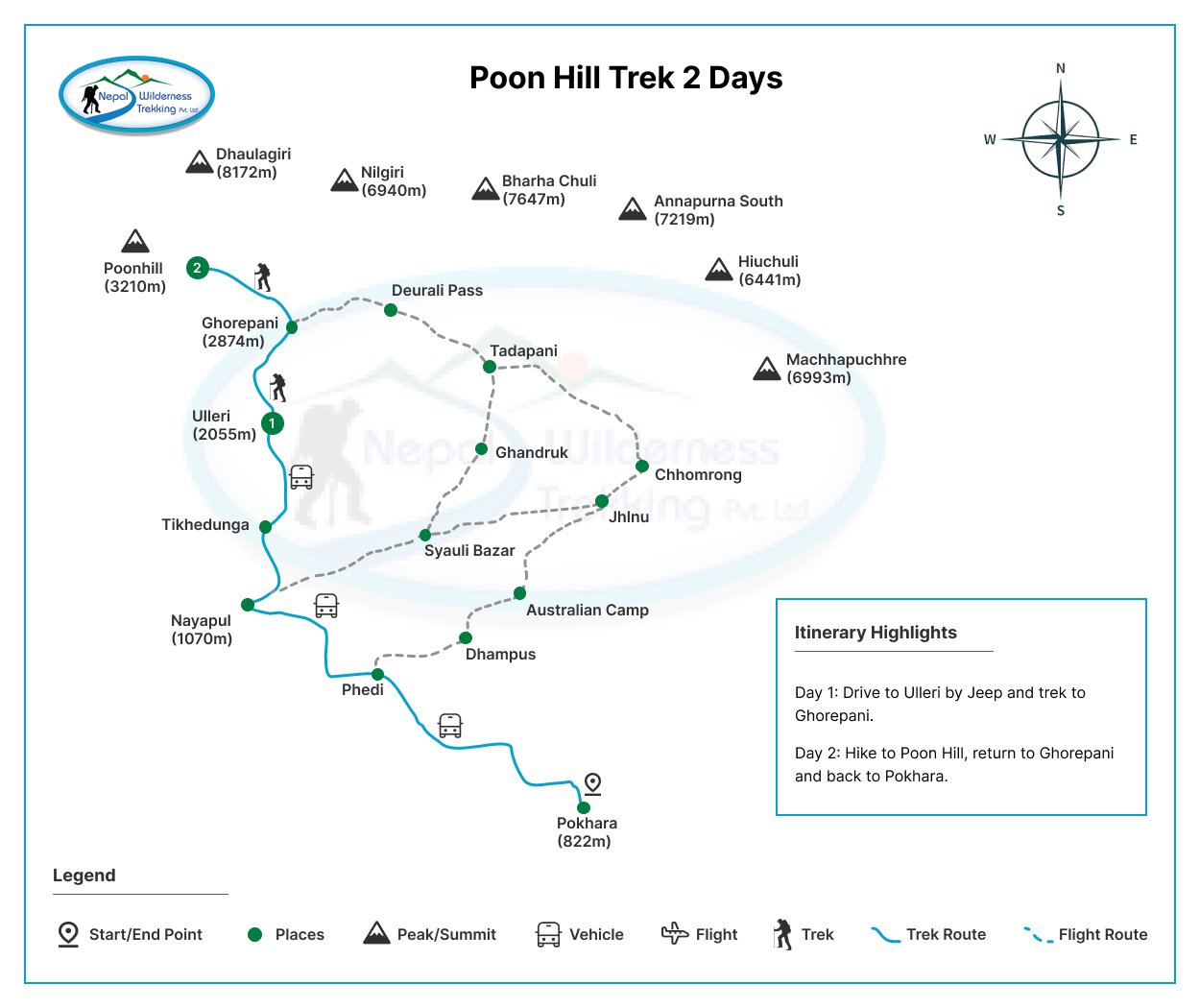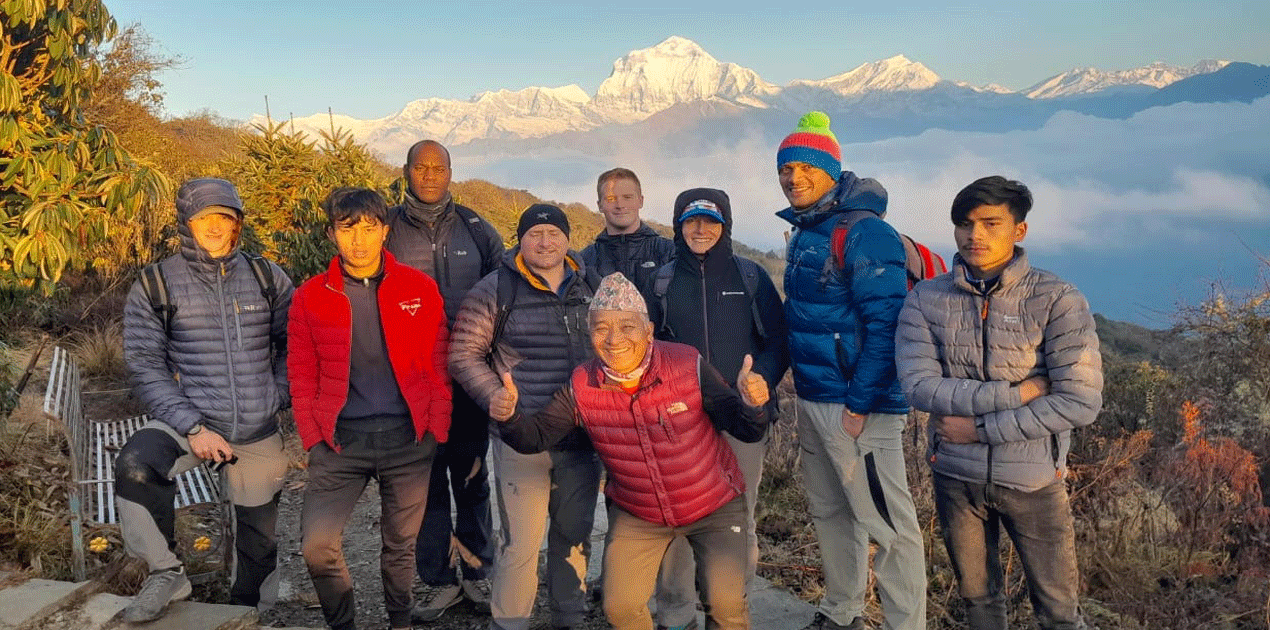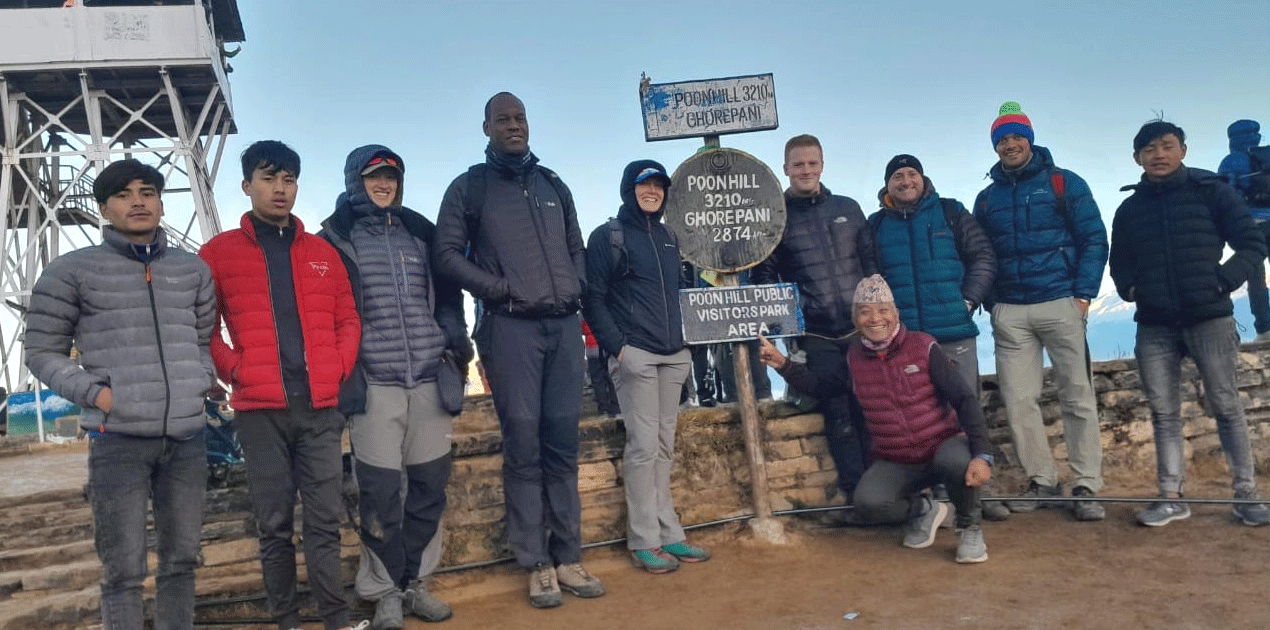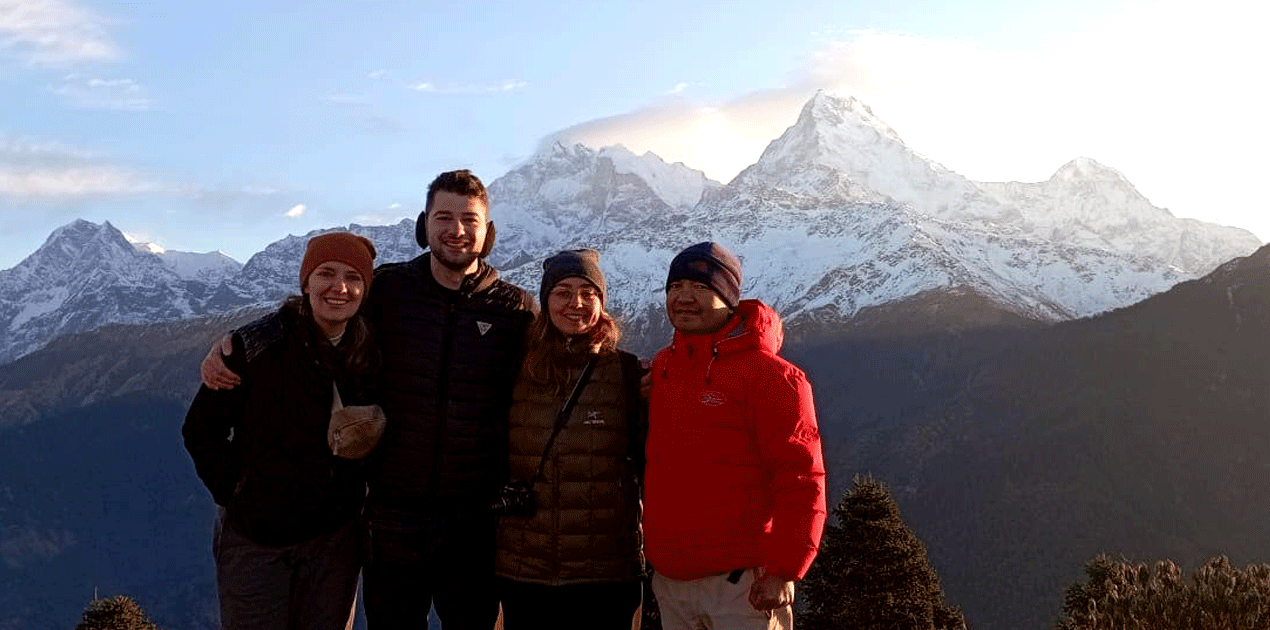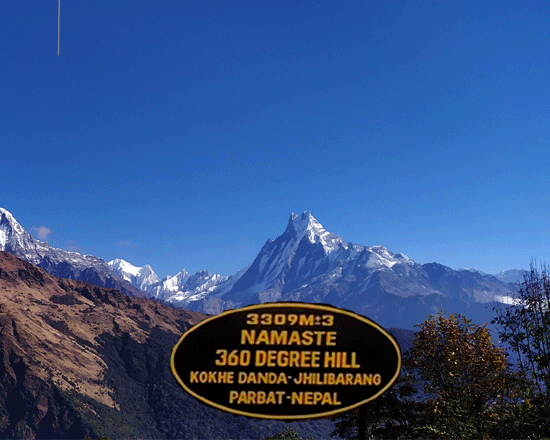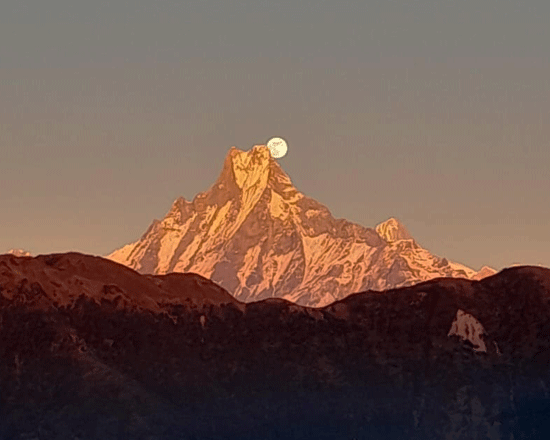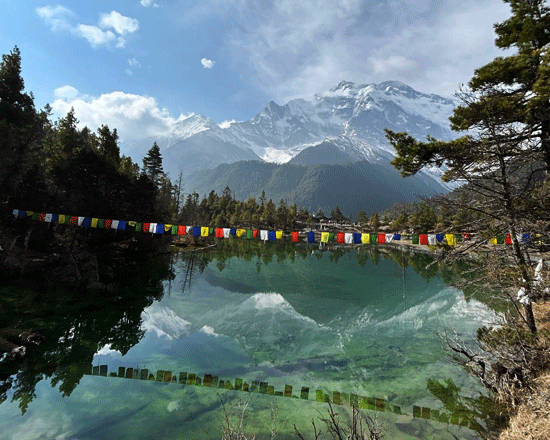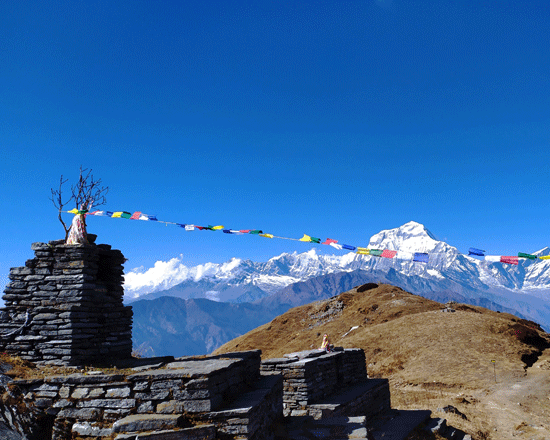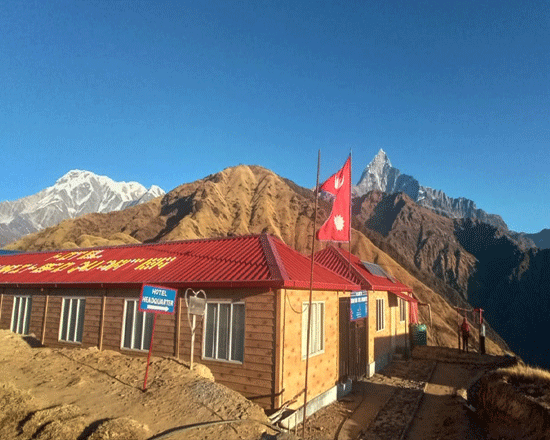Poon Hill trek 2 days
Poon Hill trek 2 days
Annapurna RegionTrip Facts
Since the terrain can be hard and the days long, hikers on these treks should be in good physical condition and have some previous mountain walking experience. Steep climbing may be involved, although it is never necessary to use ropes. Treks at this level can he arranged for periods of 16 to 21 days. Typically, a gradual ascent through a green river valley will lead you up to a number of high passes, where you will reach the altitude of 5416m. Often times, you will get a close insight into the Tibetan culture. Participants should expect to trek above 5416m/17872ft.
100%
Overview
Poon Hill trek 2 days
Trek on the popular and enjoyable Poon Hill trek, a two-day adventure in the mesmerizing Annapurna region of Nepal. The Poon Hill trek is relatively short that immerses you in natural beauty. The trek can be comfortably completed in just one night and two days. However, many trekkers choose a more leisurely three-day itinerary, starting from Naya Pul instead of taking a vehicle to Ulleri.
Witness Stunning Panoramic Views
Journey Through Picturesque Landscapes
Starting from the picturesque Ulleri village, this trek meanders through charming hamlets, lush forests, and awe-inspiring mountain panoramas. The highlight of the journey is undoubtedly the sunrise spectacle at Poon Hill, offering a sweeping vista of the Annapurna and Dhaulagiri mountain ranges.
Day 1: Trek from Ulleri to Ghorepani
On the first day, you’ll embark on a roughly 4-hour trek from Ulleri to Ghorepani. The trail is mostly uphill, passing through quaint villages and terraced fields adorned with Banthanti and Nange Thanti.
Day 2: Sunrise at Poon Hill and Descent to Hille
The second day begins with an early start as you ascend to Poon Hill to witness the sunrise. The hike lasts about 45 minutes to an hour, but the breathtaking view at the summit is well worth the early wake-up call. After soaking in the vista, you’ll descend to Ghorepani for breakfast and then continue your trek to Hille, where you can catch a taxi or jeep back to Pokhara.
Best Times to Visit
The best times to experience the magic of Poon Hill are from March to June and from September to December when the skies are usually clear and the weather is pleasant. During peak trekking seasons, the trails and teahouses can get crowded, so it’s advisable to make a reservation in advance.
Explore Ghorepani and Beyond
Ghorepani serves as a pivotal junction for various treks in the Annapurna region of Nepal, including the Classic Jomsom trek, the relatively new Khopra Danda trek, the less-crowded Mohare Danda trek, and the popular Annapurna Base Camp trek.
Overall, the Poon Hill trek is a fantastic choice for those seeking to tang the splendor of the Annapurna region while working with a tight schedule. It’s a moderately easy trek suitable for individuals of all ages and fitness levels.
Join a Trekking Group
If you’re interested in joining a trekking group for the Poon Hill adventure, Nepal Wilderness Trekking Pvt., is the top local agency that organizes group excursions from Pokhara. Renowned for our flawless trekking services, we can provide comprehensive information about available group treks and arrange all the necessary logistics for your journey.
2-Day Itinerary:
Day 1:
7:00 AM: Start your expedition from Pokhara to Ulleri by jeep, covering a distance of approximately 48 kilometers. The journey takes around 2.5 to 3 hours.
9:30 AM: Arrive at Ulleri and begin your trek to Ghorepani. This segment spans approximately 10 kilometers and takes around 4 to 5 hours to reach Ghorepani. The trail weaves through enchanting forests, alongside captivating waterfalls, while offering breathtaking glimpses of the Himalayan panorama.
3:00 PM: Reach Ghorepani and check into a guesthouse. Take some time to explore the town and enjoy the surrounding mountain vistas.
Day 2:
5:30 AM: Rise early and hike to Poon Hill to witness the glorious sunrise over the Himalayan expanse. The journey takes roughly 45 minutes to an hour from Ghorepani.
7:00 AM: Return to Ghorepani for a hearty breakfast before starting your descent towards Hille.
11:30 AM: Arrive at Hille and catch a jeep back to Pokhara.
3:30 PM: Return to Pokhara, concluding your unforgettable expedition.
Trekking from Banthanti to Ghorepani
This portion of the trek from Banthanti to Ghorepani guides you through a captivating forested area teeming with biodiversity. The trail traverses dense forests enriched with oak, rhododendrons, and bamboo trees, providing a sanctuary for a varrying number of bird species and wildlife.
As you walk through this forested wonderland, you’ll encounter a abundance of flowers and plants flourishing on the forest floor along the trail. Among them, the rhododendron stands out the most, gracing the landscape with its vibrant tincture of red, pink, and white, depending on the season. The rhododendron forests are especially enchanting during the spring when these flowers are in full bloom.
Other floral treasures that may grace your path include wild roses, daisies, and orchids. Additionally, various types of ferns, mosses, and lichens adorn the trees and rocks along the way.
The forested realm also serves as a habitat for diverse wildlife,like monkeys, langurs, and an array of streaming species. On rare occasions, you might even catch a glimpse of larger creatures like deer, Himalayan black bears, or the elusive snow leopard.
In summary, the forested passageway between Banthanti and Ghorepani unveils a splendid and multifaceted natural wonderland that is a must-explore highlight of your trek through the Annapurna region.
Meet the Poon Magar People
The Poon Magar people are a prominent ethnic group inhabiting the Ghorepani area within the Annapurna Conservation Area of Nepal. They are renowned for their distinct culture, language, and traditional way of life.
Language and Attire
The Poon Magar community speaks its own language, known as the Magar language, which is part of the Tibeto-Burman language family. Their traditional attire is equally distinctive, characterized by vibrant, colorful garments and hats adorned with feathers and ornamental embellishments.
Cultural Heritage
Their cultural tapestry is deeply interwoven with their agricultural lifestyle, showcasing a rich heritage of farming, animal husbandry, and weaving. Music and dance also hold a significant place in their culture, with lively folk songs and dance performances being a cherished tradition.
Spiritual Beliefs
Religion plays a pivotal role in the Poon Magar culture. They practice a unique fusion of animism, Buddhism, and Hinduism, believing in a multitude of spirits and deities. Their traditions involve performing rituals and offering prayers to these spiritual entities.
Warm Hospitality
The Poon Magar community is renowned for their warm hospitality and friendly manner, fostering a strong sense of community and cooperation among themselves. They have a long history of harmonious coexistence with their natural surroundings and have passed down generations of sustainable farming and land management practices.
Sustainable Tourism
Tourism has emerged as a vital component of the Ghorepani region’s economy, providing employment opportunities in the hospitality sector for many Poon Magar residents. However, their commitment to preserving their cherished traditions and way of life remains unwavering. They have actively worked towards ensuring that tourism is managed sustainably and responsibly, thus safeguarding both their cultural heritage and natural environment.
Plan Your Trek with Us
Note: All our published dates are guaranteed departures. If the dates don’t match your travel plans, we are more than happy to create your desired date. Let us know what kind of trip you are looking for and we will help in your dream destination.
For more information, visit these helpful links:
- Pokhara to Poon Hill Distance
- Ghorepani Trek with Kids
- Annapurna Base Camp Trek 10 days via Poon Hill
- 3-Day Poon Hill Trek
- 4-Day Ghorepani Trek
Detail Itinerary
- Day 01: 7:00 AM: Start your journey from Pokhara to Ulleri by jeep. The distance is around 48 kilometers and it takes around 2.5 to 3 hours to reach Ulleri from Pokhara. 9:30 AM: Arrive at Ulleri and start your trek to Ghorepani. The trek distance is around 10 kilometers and it takes around 4 to 5 hours to reach Ghorepani. The trail passes through beautiful forests and waterfalls and offers amazing views of the Himalayan range. 3:00 PM: Arrive at Ghorepani and check into a guesthouse. Spend some time exploring the town and enjoying the views of the surrounding mountains.
- Day 02: 5:30 AM: Wake up early and hike up to Poon Hill 3210M, to catch the sunrise over the Himalayan range. The hike takes around 45 minutes to an hour from Ghorepani. 7:00 AM: Return to Ghorepani for breakfast and then start your descent back to Hille. 11:30 AM: Arrive at Hille and take the jeep back to Pokhara. 3. 30 PM: Arrive at Pokhara and end your trip.
Cost Included
- Pokhara to Ulleri by sharing Jeep and Hille to Pokhara by sharing Jeep
- Italian, Chinese, Nepali, Indian, and many other European Delicious Meals three times a day (Breakfast, lunch, and dinner chosen by Menu)
- Clean and excellent Lodge accommodations in Ghorepani
- Microspikes for Dec to Feb
- Experienced English-speaking trekking guide licensed by the government, familiar with the area.
- One porter for every two to three participants. (Note: An additional cost applies for solo clients requiring a porter.)
- (ACAP) Annapurna conservations area project Permits and (TIMS) Trekking Information, management, and system card.
- Guides/Porters: food, lodge, bus transportation, salary, insurance, equipment, etc.
- Kitbag for storing your belongings
- Sleeping bag for a comfortable night's sleep on a trek in minus-25 degrees
- Necessary paper works, all government, and local taxes
- A certificate of appreciation from Nepal wilderness trekking after a successful trek
Cost Excluded
- Domestic flight
- Accommodations and meals in Kathmandu and in Pokhara before and after our journey
- Personal equipment for high and cold temperatures
- Emergency high-altitude rescue and evacuation are covered by travel insurance
- All beverages, Soft and caffeinated table drinks such as coke, beer,
- Drinking water/mineral water, Dessert, etc. Hot shower, laundry
- Tip for guide and porter
- Excluded are all costs and expenses not listed under "cost includes"
- Inclusion of costs or delays beyond the control of the management, such as landslides, weather conditions, itinerary modifications due to safety concerns, illness, changes in government policies, strikes, etc.
| Trip Dates | Trip Price | Confirmed Pax | Trip Status | |
|---|---|---|---|---|
| July 8, 2025 | US$ 220 | Join a Group | Book Now | |
| July 13, 2025 | US$ 220 | Join a Group | Book Now | |
| July 19, 2025 | US$ 220 | Join a Group | Book Now | |
| July 23, 2025 | US$ 220 | Join a Group | Book Now | |
| July 27, 2025 | US$ 220 | Join a Group | Book Now | |
| July 30, 2025 | US$ 220 | Join a Group | Book Now | |
| August 1, 2025 | US$ 220 | Join a Group | Book Now | |
| August 8, 2025 | US$ 220 | Join a Group | Book Now | |
| August 14, 2025 | US$ 220 | Join a Group | Book Now | |
| August 19, 2025 | US$ 220 | Join a Group | Book Now | |
| August 24, 2025 | US$ 220 | Join a Group | Book Now | |
| August 29, 2025 | US$ 220 | Join a Group | Book Now | |
| September 1, 2025 | US$ 220 | Join a Group | Book Now | |
| September 8, 2025 | US$ 220 | Join a Group | Book Now | |
| September 14, 2025 | US$ 220 | Join a Group | Book Now | |
| September 20, 2025 | US$ 220 | Join a Group | Book Now | |
| September 30, 2025 | US$ 220 | Join a Group | Book Now | |
| November 5, 2025 | US$ 220 | Join a Group | Book Now | |
| November 9, 2025 | US$ 220 | Join a Group | Book Now | |
| November 14, 2025 | US$ 220 | Join a Group | Book Now | |
| November 18, 2025 | US$ 220 | Join a Group | Book Now | |
| November 22, 2025 | US$ 220 | Join a Group | Book Now | |
| November 26, 2025 | US$ 220 | Join a Group | Book Now | |
| November 30, 2025 | US$ 220 | Join a Group | Book Now | |
| December 4, 2025 | US$ 220 | Join a Group | Book Now | |
| December 8, 2025 | US$ 220 | Join a Group | Book Now | |
| December 12, 2025 | US$ 220 | Join a Group | Book Now | |
| December 16, 2025 | US$ 220 | Join a Group | Book Now | |
| December 20, 2025 | US$ 220 | Join a Group | Book Now | |
| December 24, 2025 | US$ 220 | Join a Group | Book Now | |
| December 28, 2025 | US$ 220 | Join a Group | Book Now | |
| December 31, 2025 | US$ 220 | Join a Group | Book Now | |
| January 1, 2026 | US$ 220 | Join a Group | Book Now | |
| January 4, 2026 | US$ 220 | Join a Group | Book Now | |
| January 10, 2026 | US$ 220 | Join a Group | Book Now | |
| January 14, 2026 | US$ 220 | Join a Group | Book Now | |
| January 16, 2026 | US$ 220 | Join a Group | Book Now | |
| January 19, 2026 | US$ 220 | Join a Group | Book Now | |
| January 22, 2026 | US$ 220 | Join a Group | Book Now | |
| January 26, 2026 | US$ 220 | Join a Group | Book Now | |
| January 30, 2026 | US$ 220 | Join a Group | Book Now | |
| February 1, 2026 | US$ 220 | Join a Group | Book Now | |
| February 5, 2026 | US$ 220 | Join a Group | Book Now | |
| February 10, 2026 | US$ 220 | Join a Group | Book Now | |
| February 15, 2026 | US$ 220 | Join a Group | Book Now | |
| February 20, 2026 | US$ 220 | Join a Group | Book Now | |
| February 25, 2026 | US$ 220 | Join a Group | Book Now | |
| March 2, 2026 | US$ 220 | Join a Group | Book Now | |
| March 1, 2026 | US$ 220 | Join a Group | Book Now | |
| March 5, 2026 | US$ 220 | Join a Group | Book Now | |
| March 10, 2026 | US$ 220 | Join a Group | Book Now | |
| February 15, 2026 | US$ 220 | Join a Group | Book Now | |
| March 20, 2026 | US$ 220 | Join a Group | Book Now | |
| March 25, 2026 | US$ 220 | Join a Group | Book Now | |
| March 30, 2026 | US$ 220 | Join a Group | Book Now | |
| April 1, 2026 | US$ 220 | Join a Group | Book Now | |
| April 5, 2026 | US$ 220 | Join a Group | Book Now | |
| April 10, 2026 | US$ 220 | 2 | Join a Group | Book Now |
| April 15, 2026 | US$ 220 | Join a Group | Book Now | |
| April 20, 2026 | US$ 220 | Join a Group | Book Now | |
| April 25, 2026 | US$ 220 | 3 | Join a Group | Book Now |
| April 30, 2026 | US$ 220 | Join a Group | Book Now | |
| May 1, 2026 | US$ 220 | Join a Group | Book Now | |
| May 5, 2026 | US$ 220 | 2 | Join a Group | Book Now |
| May 10, 2026 | US$ 220 | Join a Group | Book Now | |
| May 15, 2026 | US$ 220 | Join a Group | Book Now | |
| May 20, 2026 | US$ 220 | Join a Group | Book Now | |
| May 25, 2026 | US$ 220 | Join a Group | Book Now | |
| May 30, 2026 | US$ 220 | 1 | Join a Group | Book Now |
| June 1, 2026 | US$ 220 | Join a Group | Book Now | |
| June 5, 2026 | US$ 220 | Join a Group | Book Now | |
| June 10, 2026 | US$ 220 | Join a Group | Book Now | |
| June 15, 2026 | US$ 220 | Join a Group | Book Now | |
| June 20, 2026 | US$ 220 | Join a Group | Book Now | |
| June 25, 2026 | US$ 220 | Join a Group | Book Now | |
| June 30, 2026 | US$ 220 | Join a Group | Book Now | |
| July 1, 2026 | US$ 220 | Join a Group | Book Now | |
| July 5, 2026 | US$ 220 | Join a Group | Book Now | |
| July 10, 2026 | US$ 220 | Join a Group | Book Now | |
| July 15, 2026 | US$ 220 | Join a Group | Book Now | |
| July 20, 2026 | US$ 220 | Join a Group | Book Now | |
| July 25, 2026 | US$ 220 | Join a Group | Book Now | |
| July 31, 2026 | US$ 220 | Join a Group | Book Now | |
| August 1, 2026 | US$ 220 | Join a Group | Book Now | |
| August 5, 2026 | US$ 220 | Join a Group | Book Now | |
| August 10, 2026 | US$ 220 | Join a Group | Book Now | |
| August 15, 2026 | US$ 220 | Join a Group | Book Now | |
| August 20, 2026 | US$ 220 | Join a Group | Book Now | |
| August 25, 2026 | US$ 220 | Join a Group | Book Now | |
| August 30, 2026 | US$ 220 | Join a Group | Book Now | |
| September 1, 2026 | US$ 220 | Join a Group | Book Now | |
| September 5, 2026 | US$ 220 | Join a Group | Book Now | |
| September 10, 2026 | US$ 220 | Join a Group | Book Now | |
| September 15, 2026 | US$ 220 | Join a Group | Book Now | |
| September 20, 2026 | US$ 220 | Join a Group | Book Now | |
| September 25, 2026 | US$ 220 | 3 | Join a Group | Book Now |
| September 30, 2026 | US$ 220 | Join a Group | Book Now | |
| October 1, 2026 | US$ 220 | Join a Group | Book Now | |
| October 5, 2026 | US$ 220 | Join a Group | Book Now | |
| October 10, 2026 | US$ 220 | Join a Group | Book Now | |
| October 15, 2026 | US$ 220 | Join a Group | Book Now | |
| October 20, 2026 | US$ 220 | 2 | Join a Group | Book Now |
| October 25, 2026 | US$ 220 | Join a Group | Book Now | |
| October 30, 2026 | US$ 220 | Join a Group | Book Now | |
| November 1, 2026 | US$ 220 | 2 | Join a Group | Book Now |
| November 5, 2026 | US$ 220 | 2 | Join a Group | Book Now |
| November 10, 2026 | US$ 220 | Join a Group | Book Now | |
| November 15, 2026 | US$ 220 | 1 | Join a Group | Book Now |
| November 20, 2026 | US$ 220 | Join a Group | Book Now | |
| November 25, 2026 | US$ 220 | Join a Group | Book Now | |
| November 30, 2026 | US$ 220 | 3 | Join a Group | Book Now |
| December 1, 2026 | US$ 220 | Join a Group | Book Now | |
| December 5, 2026 | US$ 220 | Join a Group | Book Now | |
| December 10, 2026 | US$ 220 | Join a Group | Book Now | |
| December 15, 2026 | US$ 220 | Join a Group | Book Now | |
| December 20, 2026 | US$ 220 | Join a Group | Book Now | |
| December 25, 2026 | US$ 220 | Join a Group | Book Now | |
| December 31, 2026 | US$ 220 | Join a Group | Book Now |
Trip Map
